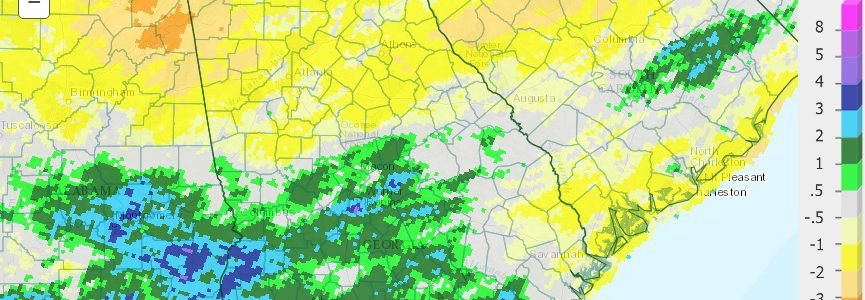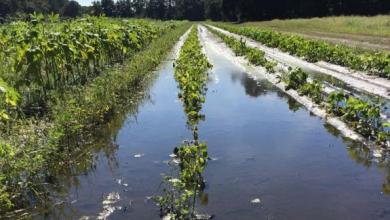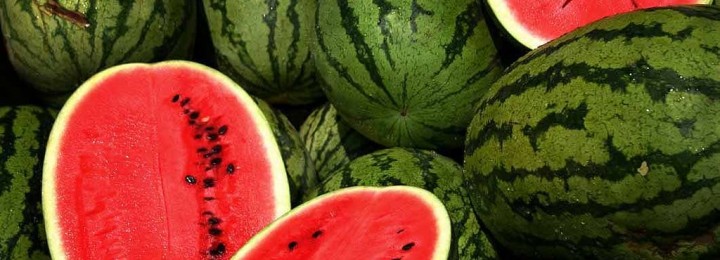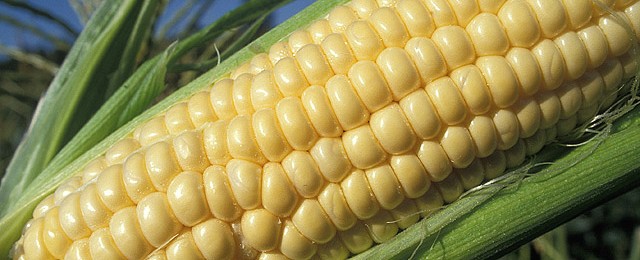Crops
-

Rainfall varied widely across the state in April. Heavy rain fell in the southern half of the state while the northern portion was mainly quite dry, leading to the development of moderate drought in the northeast counties. Temperatures almost everywhere were above normal for the month. Tornadoes were observed on April 1 and 6.…
-

The USDA has a new detailed posting on Medium.com describing how their work in agriculture and forestry are helping producers to deal with changes in climate and other long-term risks over time. You can read their review article at https://medium.com/usda-results/how-food-and-forestry-are-adapting-to-a-changing-climate-2f5b84bff9c0#.dcpt7pnr9. The USDA has supported this blog since it started through grants that help pay my salary…
-

AgWeb reported today that the State Senate in South Carolina passed a bill giving aid to farmers that were devastated by the October floods at the end of last growing season. According to the post, “Agriculture officials say October’s torrential rains wiped out $330 million worth of crops at harvest time. Farmers lost an additional…
-

Clint Thompson of UGA posted a story on this year’s water melon crop which was picked up by Online Athens. According to his story, seedlings were ahead of normal development this spring in spite of rainy weather, and many field were planted early, but some growth was further delayed due to cool, rainy weather later…
-

The latest WunderBlog from Jeff Masters discusses something that I have not heard of before: food system shock. His blog started out this way: “The greatest threat of climate change to civilization over the next 40 years is likely to be climate change-amplified extreme droughts and floods hitting multiple major global grain-producing “breadbaskets” simultaneously. A…
-

The Packer noted this week that spring sweet corn harvesting in Florida has been delayed by about ten days due to winter weather issues, but that production is rapidly increasing with better weather. They noted that “late January torrential rains flooded south Florida fields, harming winter production and causing quality issues through mid-April.” You can…
-

Dry conditions have hit parts of Georgia and Florida this year as El Niño rains have bypassed those areas to fall in other regions. The Panhandle Ag e-News from the University of Florida published an article this week discussing some of the impacts of the dry conditions and heat on vegetables. In particular, Josh Freeman,…